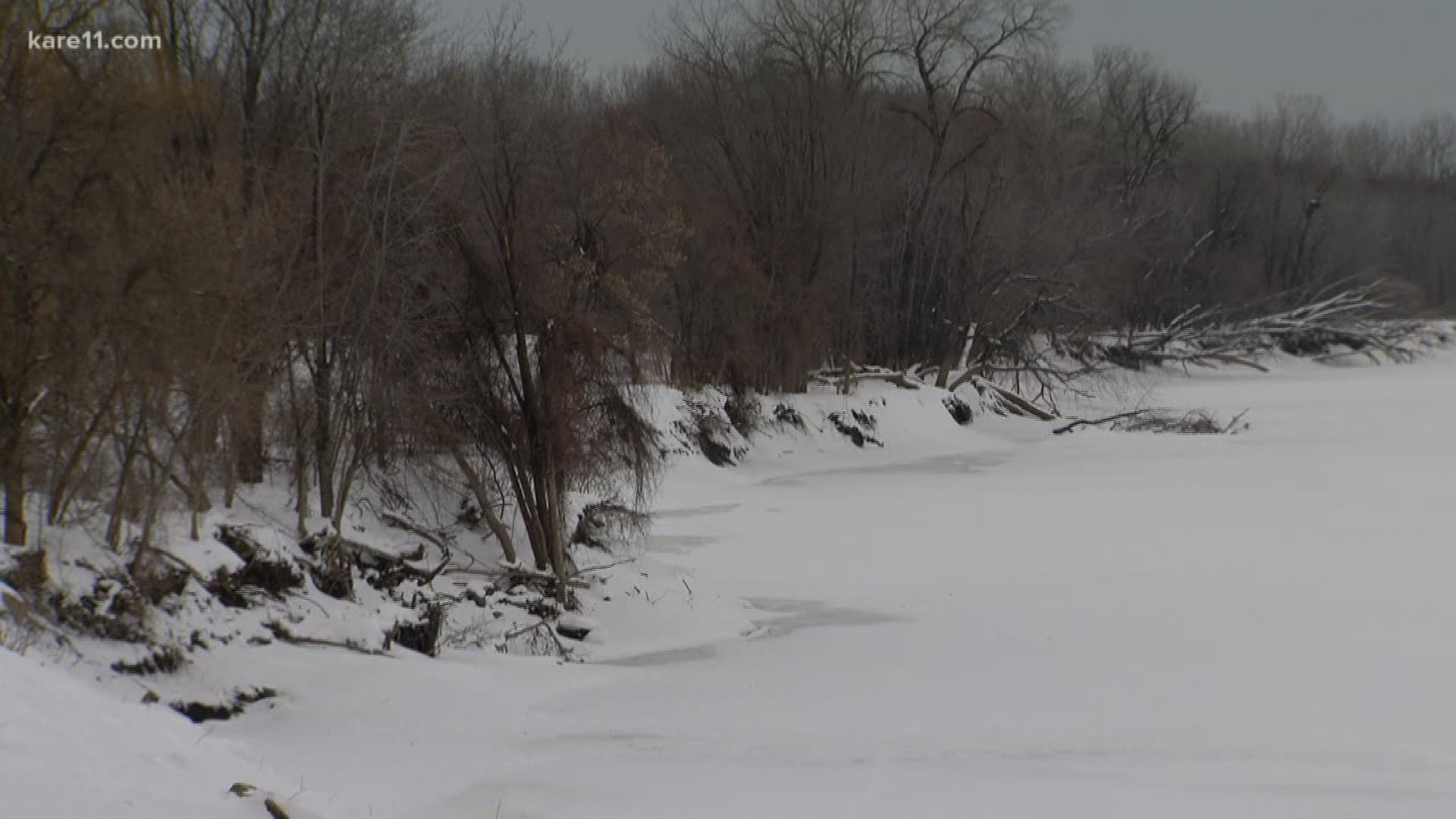CHANHASSEN, Minn. — Feeling snow fatigue after a record-setting February?
You're not going to feel any better about the future after reading this.
The National Weather Service in Chanhassen said the snowmelt flood threat in the Twin Cities is "higher than it has been in a few years," according to an initial 2019 Spring Flood Outlook released on Wednesday. Every corner of the region could be impacted by flooding when all of this snow washes away, although the severity of the floods will depend on how quickly the weather warms this spring and how much rain comes with it.
Corey Loveland, a hydrologist who forecasts rivers out of the National Weather Service office, said "everyone should be concerned." In some areas, the snowpack contains as many as six inches of water equivalent -- which will not be fun to clean up when it melts over the next few months.
"I think it's gonna be busy," Loveland said. "I think we're gonna see some widespread flooding."
Loveland said it's hard to pinpoint exactly where flooding could occur, since that depends on a number of different factors.
Still, the National Weather Service appears confident that flooding is likely after a perfect storm of conditions -- no pun intended -- aligned over the past year. It began with a wet autumn in 2018, which created moist soil. Then came the freeze in late January, with temperatures dipping toward -30 degrees to create deep frost depth. And then came the final blow: the snowiest February on record in the Twin Cities and one of the snowiest months, period, in the history of the region.
All of it spells trouble for spring.
"It's lining up just right," Loveland said, "to basically have a lot of high flood potential."
The National Weather Service identified the Mississippi River in St. Paul, for example, as having a much higher likelihood of reaching major flood stage compared to the average year. St. Paul Emergency Management is watching the spring forecast closely and is "reviewing the city's flood response plan with other city departments and county partners to ensure we are prepared to respond if any flooding occurs," emergency management specialist Mike Lovas said in an email. A spokesperson for Public Works said there is a "robust" plan in place.
In Carver, a small town on the Minnesota River accustomed to flooding, Mayor Courtney Johnson said the city has already started meeting about spring flooding potential.
"Carver's history is the Minnesota River," Johnson said. "With that, flooding is nothing new."
The city is already making arrangements for sandbags, if needed. That's just one precaution. City crews are also moving snow to areas where it won't cause as many problems when it melts, and the city is also working with local suppliers in case they need clay to raise the height of a levee that towers over the river.
The levee was built in the mid-sixties after historic flooding ravaged Carver. The city has eyed upgrades to the levee for a long time -- and is exploring a certification process with FEMA that would ease the flood insurance burden on local residents and businesses -- but the mayor feels it is adequate to prevent major flooding.
"Our staff has a plan in place, and I'm confident we can handle whatever spring throws at us," Johnson said.
More from KARE 11:

